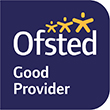Our Curriculum
Our school's curriculum is meaningful and relevant to each child's needs and provides a broad range of experiences.
At Yelvertoft Primary School we plan together a whole school creative curriculum which enables us to teach though a termly context, thereby ensuring the children's learning is based on key skills, knowledge and understanding and is relevant, interactive and applied.
We have written curriculum statements for each subject which set out our intent, implementation and impact for each area of the curriculum.
We value the breadth of our curriculum and ensure that all curriculum subjects are included in each year group.
Please click here to see our music subject action plan.
In addition we teach key skills in discrete English and Maths lessons each day. Our aim is to develop a lifelong enjoyment of learning in the children and foster their ability to think and act independently as well as contribute effectively as part of a team.
We have reviewed and updated our curriculum over the last year and it now follows a two year cycle. We are starting cycle A in September 2022. As these are new curriculum plans we will be fine tuning as we go through the year and will update any changes at the end of the cycle.
Click the links below for more detailed planning of our curriculum during this academic year
New Curriculum Flow Cycle A Class 1 & 2 (Autosaved).docx
New Curriculum Flow Cycle A Class 3 Lower KS2.docx
New Curriculum Flow Cycle A Class 4 Upper KS2.docx
Click the links below for more detailed planning of our curriculum during the following year September 2023-24
New Curriculum Flow Cycle B Class 1 & 2 (Autosaved).docx
New Curriculum Flow Cycle B Class 3 Lower KS2.docx
New Curriculum Flow Cycle B Class 4 Upper KS2.docx
Click here to download our KS1 long term curriculum map
Click here to download our KS2 long term curriculum map
Click here to view the National Curriculum
Phonics and Reading
At Yelvertoft Primary we have a whole school approach to synthetic phonics. Children are grouped by the phase that they are working towards.
The scheme we followed is called Little Wandle. Click here for link to parents page on Little Wandle
Children begin by learning the different sounds (phonemes) that are required for reading and writing. Once the Children have learnt the sounds we begin to focus on finding the initial sound in a word. We then move on to hearing the final sound and then the more tricky middle sound. Once the children can hear the sounds within the words they begin to learn how to blend these sounds together. It is essential that children learn the pure sound in order for sound blending to be effective. So c-a-t becomes cat, please avoid cuh-a-tuh as this stops the children from being able to hear the sounds blending together to form the word.
As soon as the children begin to blend they will receive two books from either The Oxford Reading Tree (ORT) – Biff, Chip and Kipper scheme, Project X or Collins Big Cat books. The first book is a phonics book that can be read (decoded) by using the phonics skills they have been taught. The second book contains the Tricky Words that cannot be read using phonics. We also have several additional reading schemes that run alongside the ORT books and these are Rigby Star, Jelly and Bean and The Runway Books, which are written to specifically engage children who need a little extra support before leaving our reading scheme to become free readers. We would encourage our children to read or share a book daily at home.
If you would like further information about Phonics, or helping your child to read please follow the link below for a parent’s guide or please speak to a member of the Early Years Team.
Parents guide to Phonics or Helping your Child to Read and Write
We are now using Kinetic letters to improve the children's handwriting.
The children follow the adventures of Bouncy the brave monkey and Skip the scared monkey. We will first learn different sitting, kneeling and lying positions that will help to strengthen our bodies ready for writing. the next step is to make sure that our hands are ready for controlling the pencil and holding the pencil with the pincer grip. we will also be learning the 6 moves or strokes that are essential for forming letters. when the children are introduced to a new letter family they will bring home a sheet showing how each letter in that family is formed. Please help them to practice this whenever they are engaged in writing at home.
Click here to read the Helping Your Child to Read and Write Booklet
Click here to read the Parents Guide to Phonics
In Class 1 the children are working towards the Early Learning goals. Click here to view them.
Click here for more information on the Foundation Stage









